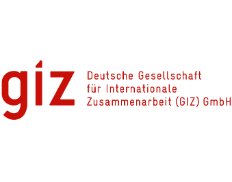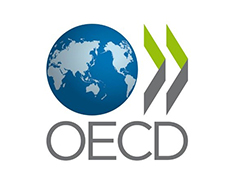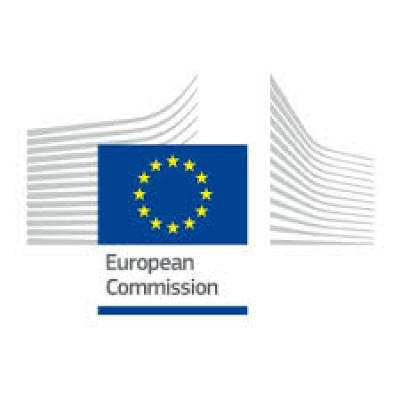
Asia Low-Carbon Building Project (ALCBT) : Consultancy services for consolidation of policy recommendations, analysis of relevant buildings & building energy regulations and scenario analysis for Cambodia & Indonesia
Details
Associated tenders • 0
Status
Date
Description
Date documents can be requested until : 13 March 2024 16:00
Title : Asia Low-Carbon Building Project (ALCBT) : Consultancy services for consolidation of policy recommendations, analysis of relevant buildings & building energy regulations and scenario analysis for Cambodia & Indonesia
Procurement No. : 100009714
Process : RFP
Date documents can be requested until : 06 March 2024 16:00
Title : Asia Low-Carbon Building Project (ALCBT) : Consultancy services for consolidation of policy recommendations, analysis of relevant buildings & building energy regulations and scenario analysis for Cambodia & Indonesia
Procurement No. : 100009714
Process : RFP
Description : GGGI for its projects in Indonesia, Cambodia and Asia Regional Office invites all eligible companies to submit their bids for consulting services for consolidation of policy recommendations, analysis of relevant buildings & building energy regulations and scenario analysis in Indonesia & Cambodia (under the Asia Low-Carbon Building Project)
PROJECT BACKGROUND:
Total global floor area of buildings is estimated to double by 2060, with over 50% of that increase likely to occur within the next 20 years, mostly in Asia and Africa . GHG emissions from buildings are a key driver for national emissions, with increased cooling demand driving GHG. In Asia, buildings operational energy account for 49% of total energy use in China, 25% in India and 23% in the ASEAN region, with ASEAN countries seeing rapid growth. The projected growth in construction also drives the emissions embodied in construction materials. Embodied carbon accounts for about 10% of global energy related GHG emissions and approximately 20-25% of building life-cycle emissions. Developed countries are increasingly adopting life-cycle carbon accounting in their building codes, but this has not been addressed systematically in project countries. Due to the high energy consumption from buildings in Asia and the anticipated increase in energy demand due to cooling, national and subnational governments are keen to reduce the energy demand and carbon footprints from buildings through improved design, bio-based materials, and efficient appliances.
Over the years, countries have come out with Laws, Regulations, Policies, Programs and Schemes to promote energy efficient buildings. Institutional frameworks, fiscal mechanisms, ESCO models and awareness creation programs have been in place which are either successful or partial successful. The ALCBT project seeks to significantly reduce GHG emissions by catalyzing nationwide transitions towards low carbon buildings in India. Technical, planning, and institutional tools for low carbon buildings will be developed and successfully implemented by key public and private sector stakeholders (including national and state/city governments, developers, building owners, suppliers, engineers, and architects; multilateral and bilateral development institutes, financial services institutions such as ESCOs and banks; academia and training institutes) by the mid of 2028 (Outcome). This result will be achieved through the development of standardized tools and systems for managing carbon emissions from the building sector and piloting them in project countries (Output I); enhancement of capacity for current and future building industry practitioners (Output II); and establishment of financial pathways for low carbon buildings (Output III). Additionally, project knowledge and tools will be accessible online and promoted systematically to stakeholders in project countries, across ASEAN and globally to create market demand, promote replication and scaling up of approach (Output IV).
Cambodia’s urban population is growing rapidly i.e. 2.90% in 2022 and it is estimated that one third of the total Cambodia’s population will reside in urban areas by 2030 . This has contributed to a fast-growing construction sector. The Ministry of Land Management, Urban Planning and Construction reported that a total of around 5,000 projects were approved for construction in 2020 accounting for 30 million m2 requiring USD 1.7 billion of investment . The construction sector contributed to more than 5% to the national GDP while creating thousands of jobs in 2022 . The sector attracts many low-skilled workers and landless migrants, providing employment to vulnerable populations. Buildings account for 52% of final energy consumption3. Recently adopted National Energy Efficiency Policy (NEEP) identifies main energy saving opportunities in cooling, lighting and others by 25% in commercial and public buildings, from 8,552 GWh to 6,431 GWh by 2030. However, policy and capacity gaps prevent the scaling-up of low carbon buildings. The lack of concessional finance for green buildings is another challenge.
The Cambodian government has committed to enhancing efficiency in the building sector, in the National Energy Efficiency Policy (NEEP), revised Nationally Determined Contributions, the National Cooling Action Plan and the NDC Roadmap for Buildings and Construction 2020-2050. The Long-Term Strategy for Carbon Neutrality 2050 identifies energy efficiency in the building sector as a major source of energy emission reductions. The government has also developed Cambodia’s Guidelines and Certification for Green Buildings (CamGCGB) and in the process of Building Technical Regulations (BTR) and a Building Energy Code . Government initiatives are supported by a UN project on Sustainable Cooling and the Cambodian Green Building Council’s voluntary certification program, CAMEEL. The carbon performance metric and support on sustainable cooling through the ALCBT will inform the implementation of these policies and support monitor and incentivize compliance.
Similarly, the building sector in Indonesia consumes 30% of the country’s total energy and is expected to rise to 40% by 2030. Residential buildings contribute to 95% of this energy use, but there is currently no obligatory framework for energy-efficiency or decarbonization measures in residential buildings. Energy efficiency regulations apply only for buildings with floor area over 500m2 and exceed eight stories. The retrofit and renovation of existing buildings is underemphasized in the country due to the strong focus on new buildings. In the Third National Communication on NDCs, Indonesia indicated an unconditional GHG emission reduction target unconditionally to 29% and conditionally target (with international support) of up to 41% compared to business-as-usual (BAU) scenarios of 834 Mt CO2eq and 1,185 Mt CO2eq, respectively, by 2030. In the energy sector, actions include carrying out energy efficiency measures through improvement of device and energy system efficiency and enhancing awareness of stakeholders. To support this, the project will develop tools and system for managing carbon emissions from the building sector, enhance the capacity of building industry regulators and practitioners on low carbon buildings and sustainable cooling, facilitate financing of low carbon buildings, and promote knowledge exchange between countries on low carbon buildings.
PROPOSED ACTIVITIES FOR THE OVERALL PROJECT:
GGGI is interested in procuring the services of a Firm, including consortiums (hereinafter referred to as ‘Firm), with experience in energy efficiency and Demand Side Management (DSM) in building sector. The Firm shall work closely with GGGI, Cambodian, and Indonesian government authorities under the directions of GGGI. The Firm shall contribute to GGGI’s scope for carrying out the related activities to implement the ALCBT project in Cambodia and Indonesia.
SCOPE OF WORK:
The Firm shall conduct a comprehensive and deep-drive study on policy initiatives taken by India in Building Energy Efficiency, scenario modelling to investigate the Net-Zero scenarios in the building sector by 2050, conduct a parallel, in-depth review of the current policies, institutional frameworks, and best practices in Cambodia and Indonesia and provide comparisons of these policy landscapes with an aim to draft few policy recommendations to the Govt. of Cambodia and Indonesia for transitioning towards Low-Carbon buildings in a short, medium, and long term. The Firm shall ensure that the study is in line with global standards and best practices with appropriate secondary research, stakeholder consultation and analysis.
Under the scope of services for this assignment the Firm shall carry out the following:
A. Policy Review and Institutional Mapping of Building Energy Efficiency programs in Cambodia and Indonesia
1. Conduct a deep-drive study by undertaking as-is-assessment and outlines key aspects to understand status of energy efficiency and conservation programs, policies, schemes, etc., for the building sector in the countries. since 2000.
2. The study shall investigate and identify the following:
a. The provisions under the law pertaining to energy conservation at national and sub-national levels.
b. Positioning of BEEP in various policy initiatives in the respective countries:
i. Cambodia: Initiatives like National Energy Efficiency Policy (NEEP), Power Development Plan (PDP), National Cooling Action Plan, NDC Roadmap for Buildings and Construction 2020-2050, Long-Term Strategy for Carbon Neutrality 2050, Building Technical Regulations (BTR), building energy code, Cambodia’s Guidelines and Certification for Green Buildings (CamGCGB), National Adaptation Programme of Action (NAPA), National Strategic Plan on Green Growth (NSPGG) 2013-2030, Principles for permitting the use of rooftop solar power in Cambodia, Cambodia’s Roadmap for Sustainable Consumption and Production 2022-2035, renewable energy and energy efficiency development, etc.
ii. Indonesia: Initiatives like National Energy Policy, National Energy Efficiency Action Plan (NEEAP), Energy Efficiency Labelling and Standards, Green Building Index (GBI), Energy Conservation Roadmap, Roadmap for an Energy Efficient, Low-Carbon Buildings and Construction Sector in Indonesia, National Energy Plan, National Action Plan on Climate Change Adaptation, Green buildings code, Long-Term Low Carbon and Climate Resilience Strategy (LTS-LCCR) 2050, renewable energy development, etc.
c. International collaboration and national initiatives taken under various bi-lateral dialogues and through developmental organizations like USAID, UN Organizations, GIZ etc.
d. Institutional mechanisms working on advancing energy use efficiency in Building Sectors:
i. Policy making at national & sub-national levels
ii. Program implementation
iii. Financing
iv. Energy Service Companies (ESCOs) including Super-ESCO
v. Construction Associations
vi. Philanthropic Organizations
vii. Research & Development
viii. Enforcement
e. Certification, Awards and Recognition mechanisms in building energy efficiency and green building sector
f. Critical observation/analysis of the above study findings with overall impact on regulatory, technology, fiscal and market transformation with the sector’s contribution to country’s NDC goals.
3. Examine the positioning of green building materials within various policy initiatives, such as the National Energy Efficiency Policy and Strategy, Energy Efficiency and Conservation Master Plan, and other relevant programs in Cambodia and Indonesia.
4. Assess international collaborations and national initiatives promoting the use of green buildings and green building materials.
B. Prospective Analysis with Scenario Modelling to achieve Net-Zero building by 2050 and establishing Low-Carbon Pathway in building sector.
The study shall be based on the landscape study in ‘A’, stakeholder consultations and international learnings to establish country’s state of the play, potential for net-zero building, possible technology intervention, investment requirement etc. The study shall analyse three (3) scenarios from the baseline (2015) i.e. (i) Business-as-Usual (BAU) scenario (ii) Enhanced EE (EEE) Scenario (iii) Net-Zero Energy (NZE) Scenario. In the first two scenarios, the analysis should project by what time the Net-Zero building might be achieved whereas the NZE scenario should target 2050 to achieve the same. The following are the broad activities:
a) Establish the baseline scenario (2015) and year-on-year (EoY) growth, energy consumption, efficiency improvement, integration of renewable energy etc. in building sector.
b) Establish the projection of energy intensity (toe/m2 of building) and carbon intensity (kg of CO2 / m2 of building) from 2015 to 2050. The Firm will establish the methodology of estimation in due consultation with GGGI and few expert opinions.
c) The carbon intensity modelling shall capture the building life cycle which should include building material, construction activities and post-construction energy usage and end of life management.
d) Develop suitable analytical model (excel based) to analyse and project the three scenarios described above. The model should be robust and simple with minimum assumptions and deviations. However, the model should have the flexibility to accommodate larger deviations for future analysis. All the assumptions should be suitably mentioned in the model. The model should be developed for ‘Existing’ and ‘New’ buildings separately for national and sub-national level and should cover various building typologies, including commercial, hospital, office, shopping malls, etc.
e) Validate the model with actual and available data through a stakeholder consultation and present the model to Technical Advisory Committee (TAC) constituted by GGGI.
f) Incorporate the suggestions/feedback, if any in the draft models.
g) Handhold GGGI to understand and operationalise the model.
C. Stakeholder Consultation and Draft Policy Recommendations
Based on the modelling analysis, the Firm shall conduct suitable stakeholder consultation to understand the areas and need of policy interventions which would lead to Low-carbon buildings transitions in the country. The policy recommendations may look into areas like strengthening the Rules and Regulations under existing policy tools, Green Procurement, Green Financing etc. The following are the activities the firm will need to deliver:
a) Expert consultations: At least 15 (fifteen) individual stakeholders to be consulted from Govt. (5), Think-tanks (3), Financial Institutions (3), individual subject matter experts (4) in each country.
b) Consultation Workshop: Organise a consultation workshop with at least 30 relevant participants to get input/feedback in each country.
c) Based on the consultations, prepare the draft policy recommendation with at least four (3) suggestions per country for Govt’s consideration. Each policy recommendation should contain a brief description, justification, linkage with existing regulatory provisions, Pros & Cons and long-term impact in the sector.
The Firm shall ensure that the minutes of the stakeholder consultations are duly recorded and produced to GGGI. List of the stakeholders for consultation will be prepared by the Firm in consultation with GGGI. The Firm will prepare suitable consultation papers/questionaries before conducting the interviews/consultations.
For more details, please refer to the Terms of Reference (TOR) document attached.
IMPORTANT TIMELINES:
The tender submission deadline is 6 March 2024, 16:00 Hrs KST (Korean Standard Time).
If any bidder has any request for clarification on the TOR or any part of the tender documents, GGGI will be happy to clarify if they are received on or before 7 days before the deadline (namely: if the tender submission deadline is 16:00 15 April KST, then the due date for submission of request for clarification is 16:00 8 April KST).
Interested parties will be required to register their details on the GGGI e-Green Procurement Portal (https://in-tendhost.co.uk/gggi).
HOW TO OBTAIN THE DOCUMENTS:
Documents can be accessed via the e-Green Procurement Portal by selecting ‘View Details’ on the relevant notice and then clicking the ‘Tender Application’ button. If you are a new supplier, you will be required to register your details. If you have an existing account, you will need to login to the portal. Please refer to the guidance documents under the `Supplier Guidance` area of the portal for further information.
ONLINE TENDER MANAGEMENT:
Once in the Tender Management Area for the tender, there are five possible tabs: ‘Tender’, `Tender Documents`, ‘Correspondence’, ‘Clarifications’ and ‘History’. Select the 2nd tab (`Tender Documents`) where you will find useful information regarding the RFP. Scroll down to the heading ‘Tender Documents Received’ where you will be able to view / download the documents.
OPTING IN & OPTING OUT:
Please note that you may be required to ‘Opt In’ before you can start populating your response. The ‘Opt Out’ functionality will also be available throughout the duration of the tender process. Opting out will give you the option of declaring you no longer want to receive any further communication in relation to this tender along with the opportunity of providing comments and feedback for this decision. You can choose to ‘Opt In’ at any time during the tender process if you initially decided to ‘Opt Out’.
SUBMITTING YOUR RESPONSE VIA THE PORTAL:
Please note that you may be required to ‘Opt In’ to be able to submit a response through the portal. Tenderers will be required to upload any mandatory Placeholders (i.e. specified documents) within the `Tender Documents` tab. The ability to attach additional documents may also be available. Your proposal will not be submitted until you click `Submit Return`, located towards the bottom of the screen. On clicking `Submit Return`, you will receive a receipt confirming that your proposal has been submitted to GGGI.
Please read Instructions on How to submit the Proposal.
NOTIFICATION EMAILS:
To ensure you receive email alerts and notifications from our system, please add the email domain `@in-tendorganiser.co.uk` to your Safe Senders list.




